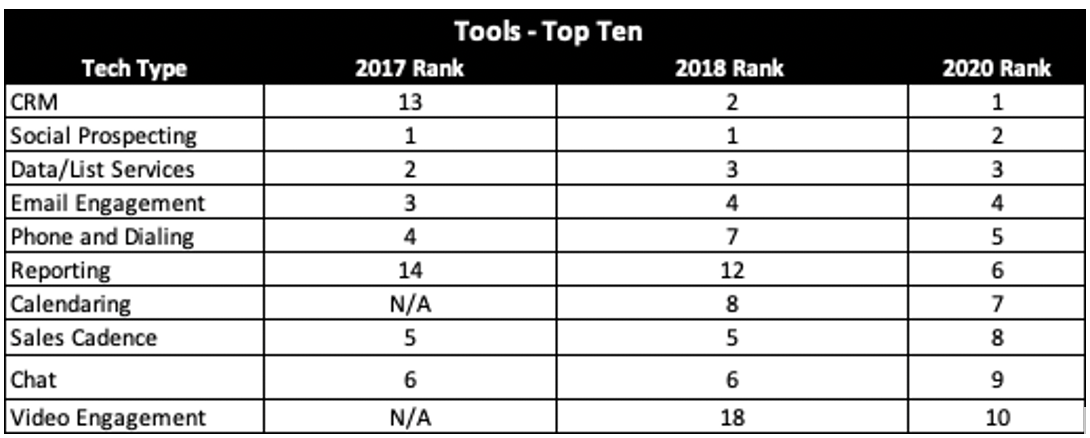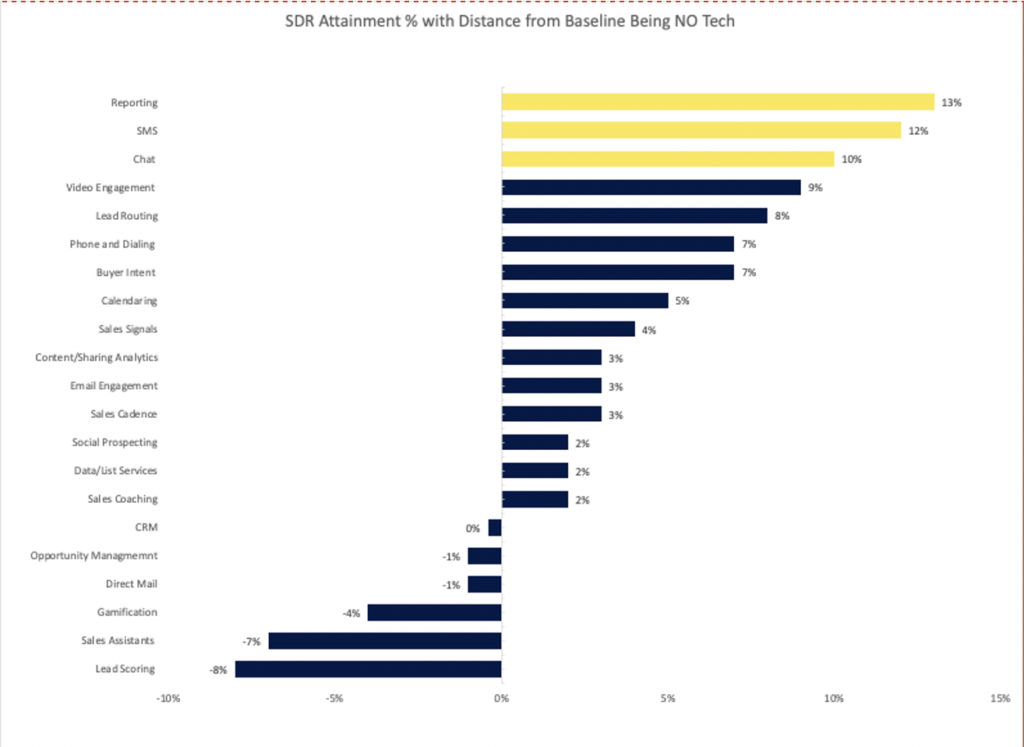Rethinking Sales Tech Trends
“Innovation distinguishes between a leader and a follower.” – Steve Jobs
Technology has taken an enormous leap forward in the past year. Advances in cloud, artificial intelligence (AI), and machine learning (ML) that were expected to arrive in a decade emerged in one year. Embracing innovative tech is what will distinguish the leaders in sales from the rest of the pack.
Remote work is now a necessity. Sales teams that haven’t embraced remote-enabled technology are scrambling and have had to lean on systems that are largely untested on a wide scale. But buyers now work remotely too. In-person meetings and office visits haven’t been possible, and sellers have had to complete the entire sales cycle virtually.
As we emerge from a year of unanticipated and unprecedented change and technological growth, here’s how sales teams have adapted and transformed to meet the digital needs of the new sales landscape.
CRMs are the Backbone of Sales Organizations
In our recent State of Sales Development study, we drew from polling data from over 450 top sales dev leaders to evaluate their teams and technology. When asked about their top technical tools, Customer Relationship Management (CRM) tools rose to the top. Compared with past studies, there’s a clear shift toward embracing CRM as the system of record, putting it in its proper place.
In 2017, we predicted that CRM adoption would increase by 38%, but in 2020, all respondents used a CRM. Since the implementation of CRMs is so widespread, it might feel like a no-brainer that this is a top tool for sales teams. CRMs have become the preferred source of truth for reporting, marketing, and measuring sales teams’ productivity, even while data reliability in CRM remains sketchy.

Still, without the robust capabilities of CRMs, modern sales teams are left in the dark about contacts and opportunities. Particularly in 2020, sales teams who went remote leaned heavily on their CRM to provide real-time data for reps and sales leaders, no matter where they were.
Additionally, CRM has to be continuously updated and populated with records and activities. When reps are relied on to do this, other priorities get in the way and basic human error leads to misinformation or a lack of information in the CRM. There is a common behavior of looking to CRM as a source of truth, but it’s only as accurate as you make it. Inconsistent adoption will lead to gaps in information. That’s why a tool that can automatically update your CRM with a real-time bi-directional sync is so powerful.
Combined with other integrations, like social prospecting and email engagement, up to date CRMs can give key information about customers that reps can then use to adjust their messaging and cadence.
If CRM is to truly be the foundation of a sales organization’s tech stack, on which every other tech innovation builds, there needs to be deliberate effort applied to promoting its adoption and ensuring adherence to processes to produce accurate data insights.
Ramping Up Sales Engagement Solutions
In 2017-2018, our research showed that utilizing sales cadence was associated with the greatest attainment (78%) compared to other sales tech. With better technology, these tools grew in 2020, and prioritization and targeting tools reported the highest attainment (80%). Many of these tools (sales cadence, targeting, prioritzation, etc) have been consolidated into a single platform—like sales engagement.
Sales teams are increasingly relying on technology to tell them more about how and when to contact a lead. Reps can focus on the fundamentals of sales and better understand their contacts and their specific pain points. Sales cadence, prioritization, and targeting tools simply narrow the pool of leads to create maximum impact for your teams.

Consolidating Tech Stacks
Reporting and SMS technologies lead out in the tech attainment space. However, as sales engagement technology continues to grow, the tech stacks for teams have become fractured, and reps spend time switching windows to access different tools and reports.
According to task management platform Asana, on average workers use 10 apps 25 times per day to complete their work. In the US, this number is higher, employees manage 13 tools an average of 30 times per day. Every time a rep switches an app, they lose productivity and are more likely to struggle to prioritize tasks and objectives.
Many organizations have recognized this problem, and the priority for bringing on new technology is integration. An all-encompassing platform allows workers to stay in one tool and access all the technology and reporting they need to complete their work. The number of tools available to sales teams is vast, but sales leaders are thinking smarter about which tools they bring on and the value that they add to their existing stack.
Digital enhancements to traditional sales tools have enabled remote teams to complete work that wouldn’t have been possible even a decade ago. Teams that embraced and accelerated their adoption of these tools had a solid foundation to add even more capabilities and efficiencies to their teams. Sales leaders looking forward to 2021 should continue to prioritize tools that add value to their teams rather than just distract.
Playbooks by XANT includes reporting, SMS, video engagement, prioritization, and the top tech tools that sales teams need to be successful in 2021. And, all of this is achieved without moving out of a CRM, creating one go-to tool for your entire team to stay on track. Schedule a demo here.
